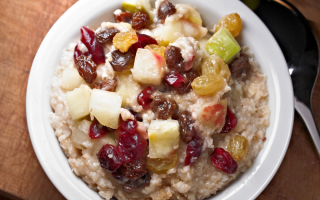As new trends in the baking world emerge, home bakers are constantly seeking fresh recipes to try. Whether it’s a viral treat from social media or a unique twist on a classic, the variety keeps the baking community engaged and inspired. The latest trending baking recipes can elevate any kitchen experience and introduce delightful flavors that appeal to both novice and experienced bakers alike.
In recent months, several recipes have gained traction, showcasing creativity and skill. From innovative sourdough variations to visually stunning layer cakes, these recipes offer something for everyone. Understanding what is currently popular can lead to exciting baking sessions that impress friends and family.
Keeping up with the latest trends allows bakers to experiment with flavors and techniques that can transform simple ingredients into culinary masterpieces. Exploring these trending recipes not only enhances baking skills but also fosters a sense of community among those who share a passion for this delicious art.
Essential Baking Techniques
Baking is a precise art that often requires expertise in various fundamental techniques. Mastering these methods can significantly enhance the quality of baked goods, ensuring consistency and flavor in every recipe.
Mixing Methods
Different baking recipes often specify unique mixing methods, which affect the final texture of baked goods. Common techniques include:
- Creaming: This involves beating butter and sugar together until light and fluffy, incorporating air into the mixture. It is essential for recipes like cakes and cookies.
- Folding: Used to gently combine delicate ingredients, such as whipped cream or egg whites, without deflating them, important in soufflés and meringues.
- Stirring: A basic method for combining wet and dry ingredients, primarily used for muffins and quick breads.
Understanding when to use each method can streamline the baking process and improve results.
Baking Temperatures
Correct baking temperatures are vital for achieving the desired outcome. Typically, ovens should be preheated to the temperature specified in recipes. Here are a few key points:
- High Temperatures (400°F and above): Ideal for roasting vegetables or baking thin pastries, leading to crisp exteriors.
- Moderate Temperatures (350°F): Common for cakes, cookies, and breads, providing even cooking without burning.
- Low Temperatures (300°F and below): Used for slow baking, such as cheesecake and meringue, allowing gentle cooking without drying out.
Using an oven thermometer can help ensure accuracy in temperature settings.
Timing Considerations
Timing plays an essential role in the baking process, as it affects texture and flavor. Each recipe comes with specific times that should generally be adhered to.
- Check Early: It is often recommended to check baked goods a few minutes before the suggested time to avoid overbaking.
- Use of Toothpick Test: Inserting a toothpick into the center can indicate doneness; if it comes out clean, the dish is ready.
- Cooling Times: Allow items to cool on a wire rack for even temperature distribution and to prevent sogginess.
Being mindful of timing can enhance the final product significantly.
Popular Ingredients in Trending Baking Recipes
Bakers are increasingly turning to unique ingredients that enhance flavor and nutritional value. Natural sweeteners, ancient grains, and superfood additions are particularly popular, offering healthier alternatives and creative twists on traditional recipes.
Natural Sweeteners
Natural sweeteners are gaining traction as healthier alternatives to refined sugars. Options like maple syrup, honey, and coconut sugar not only provide sweetness but also bring distinct flavors to baked goods.
For instance, maple syrup can add a rich, caramel-like taste to cakes, while honey may impart floral notes. Coconut sugar, on the other hand, has a lower glycemic index, making it a preferred option for those watching their sugar intake. These sweeteners are often used in recipes for muffins, cookies, and cakes, making a significant impact on taste and health.
Ancient Grains
Ancient grains are becoming a staple in modern baking recipes due to their nutritional benefits and unique textures. Grains like quinoa, spelled, and farro are now featured in breads and cakes.
Quinoa flour, for example, is high in protein and fiber, adding density to baked goods while supporting a gluten-free diet. Spelled flour contains more protein than conventional wheat flour and provides a slightly nutty flavor, enhancing the overall taste. Integrating these grains into recipes not only diversifies flavors but also boosts the nutritional profile of baked goods.
Superfood Additions
Superfoods are being incorporated into baking to elevate both health benefits and flavor profiles. Ingredients such as chia seeds, matcha, and cacao nibs are popular choices. Chia seeds can be added for their omega-3 fatty acids and fiber, perfect for enhancing cookies and bread. Matcha brings a vibrant green color and earthy flavor to cakes, making them visually appealing and nutritious. Cacao nibs serve as a healthier chocolate alternative, offering antioxidants and a rich chocolatey flavor without added sugars. These superfoods enrich recipes and align with health-conscious trends in baking.
Showcase of Trending Baking Recipes
Baking trends revolve around innovative flavors, dietary options, and a blend of traditional and modern techniques. The following sections highlight popular savory bakes, gluten-free desserts, and vegan treats.
Savory Bakes
Savory bakes have gained popularity as enticing alternatives to sweet options. Cheese and herb scones are topping the charts, combining sharp cheese with fresh herbs for rich flavors. These scones are perfect for brunch or as a snack.
Savory focaccia is another trend, topped with ingredients like caramelized onions, olives, and roasted tomatoes. This dish stands out for its versatility, serving well as a side or a base for sandwiches. Quiche, often filled with seasonal vegetables and cheeses, continues to be a crowd favorite. Its flaky crust and custardy filling appeal to diverse palates.
Gluten-Free Desserts
An increasing number of bakers seek gluten-free options without compromising taste. Almond flour-based cakes have surged in popularity, offering rich flavors and moist textures. Variants like lemon almond cake bring zest and brightness.
Flourless chocolate cake remains a staple. Made from quality chocolate, eggs, and sugar, it provides a luxurious experience while appealing to gluten-intolerant individuals. Coconut macaroons are also trending, combining shredded coconut and sweeteners for chewy perfection. These bites are often dipped in chocolate for added indulgence.
Vegan Treats
The demand for vegan baking recipes reflects a growing interest in plant-based living. Vegan chocolate chip cookies are a must-try, utilizing ripe bananas or applesauce in place of eggs for moisture. Raw vegan cheesecake has captured attention, using cashews blended with natural sweeteners and fruit. This treat offers a creamy texture without dairy. Vegan brownies, often made with black beans or avocado, provide fudgy satisfaction. They are rich in nutrients while catering to those avoiding animal products.
Tips from Cookbook Authors
Cookbook authors share valuable insights that can enhance both the baking process and final dish presentation. These tips can help bakers of all levels refine their skills and enjoy the creative aspects of baking.
Recipe Development
When developing recipes, authors emphasize the importance of balancing flavors and textures. They often start with a base recipe, adjusting ingredients to achieve the desired results.
Key Considerations:
- Ingredient Quality: Always use fresh, high-quality ingredients. This impacts both flavor and texture.
- Testing: Authors recommend testing recipes multiple times. Ensuring consistency helps to perfect the outcome.
- Adaptation: Don’t hesitate to modify recipes. For example, substituting different flours or sugars can create unique results.
The authors encourage bakers to document these changes for future reference.
Presentation and Styling
Presentation significantly impacts the perception of a baked dish. Cookbook authors often stress the role of visual appeal.
Key Techniques:
- Plating: Use clean, simple plates. This allows the food to stand out.
- Garnishes: Fresh herbs, edible flowers, or a dusting of powdered sugar can enhance appearance.
- Color Contrast: Incorporate contrasting colors in desserts to make them visually appealing.
They advise using different heights and angles when arranging baked goods for an eye-catching display.




